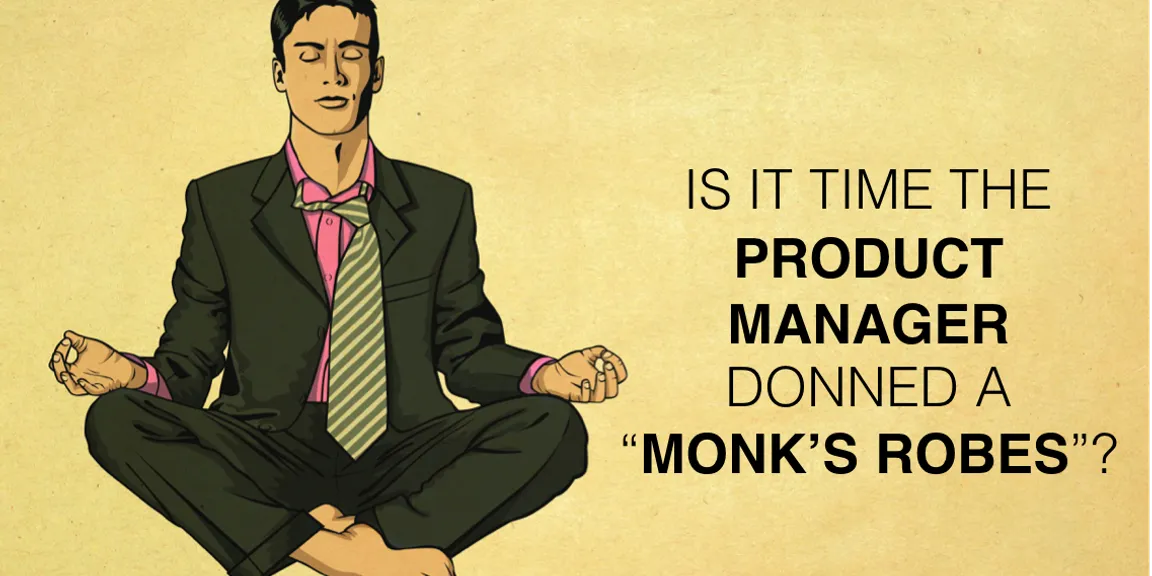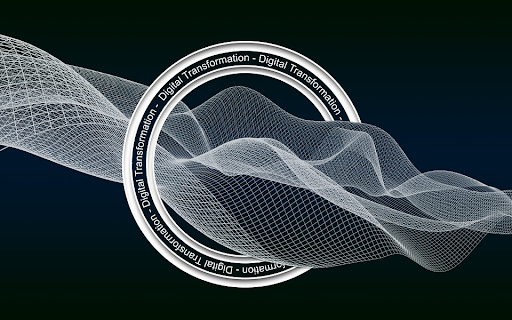

Breathe & Build
Can Mindfulness Help You Build Great Products?
Scores of excellent articles have been written on building great products: start with the “why”, product equals team, build to solve rather than indulge, the “cupcake strategy”, build-ship-iterate-repeat, reincarnate as Steve Jobs, go on a “feature” diet, and so on and so forth.
And yet, only a very small percentage of products “succeed”. The real problem is: many products start with a great idea, but are “lost” in the building. In fact, building products seems akin to quicksand – you get sucked in, miss the forest for the trees, sometimes the trees for the forest, products bloat, competitors become more important than customers, and eventually a product is shipped out that is a far cry from what was intended.
This got me thinking. In the art & science of it all, is there something else we are missing?

Let’s first take a step back and look at what product management entails. Myriad things, but let’s think of it as dance of a triad:
1. “Creative ideation” with no limits, a connecting of different color dots
2. Open minded evaluation with no ego, where the customer is “listened” to
3. Orchestration of a million tasks, done by hundreds of people in tens of departments
Using these as guideposts I explore the question: Can mindfulness help the product manager further each of these roles and build great products, with joy?
I examine this in a three-part article, drawing upon mindfulness wisdom, psychology concepts, and my own experiences building multiple digital and physical products.
Part I: Countering stress with mindfulness to sustain “flow”, build masterpieces
Part II: Is flow enough? Going beyond, with a Beginner’s Mind, avoiding ego traps
Part III: Yin and Yang. Yang and Yin. Cracking the code with a Balancing Act
Part I: Countering stress with mindfulness to sustain “flow”, build masterpieces
“Creative ideation” differentiates a great product manager from a good one. Innovations and disruptive ideas are born from this “connecting of different colored dots”. Could there be a Michelangelo or a Mozart lurking within each one of us waiting to be discovered?
The Agony & The Ecstasy
“This was his most glorious experience in working marble; never had he had such an expanse of figure, such a simplicity of design; never before had he been so possessed by a sense of precision, force, penetration or depth of passion. He could think of nothing else now, could not bring himself to stop for food or change of clothes,” writes Irving Stone of the great Renaissance sculptor Michelangelo, his masterpiece, David, and of a passion and focus so intense that it was sustained for over two years.
This state of complete immersion in an activity, so deep that one loses their sense of time, of themselves, of their problems, has been termed as flow by the psychologist Mihaly Csikszentmihalyi (pronounced six-cent-mihaly). During flow, a person experiences a great sense of clarity, effortless concentration and focused attention, feelings of ecstasy, serenity and timelessness, a feeling that goals, even if challenging, are attainable. Most importantly, in flow, the state of flow itself is its reward.
Flow, Creative Ideation & the Product Manager: Clearly, flow is crucial for the product manager to “ideate” - to see possibilities where others see none, to presciently visualize a sculpture in all its glory within a block of marble.
Not only does some of the best, most inspired and creative work emerge from these moments but they leave one with a sense of satisfaction, a sense of joy that becomes a motivator for overcoming troughs in the product building journey. Even hard-nosed business publications acknowledge the connection of flow to productivity, like this McKinsey study.
The neat part? The creative genius that emerges from flow may not be the sole dominion of brilliant sculptors, musicians and scientists - it may just be accessible to the humble product manager, to all of us.
Lets quickly look at how and when one is in flow. By measuring people’s self-scores of the challenge level they were facing and their own skill (real or perceived) in facing those challenges, Mihaly concluded that for people to flow, they need to be in the high challenge, high skill zone, as depicted below.

Flow = (High Challenge, High Skill)
But here is the catch (and if you’ve already figured it out, shhh). Building a product is challenging, to say the least - and most of us are skilled at what we do. So, why aren’t we all in flow - all the time?
Flow, meet your nemesis: “Noise”
Ok, quick question. What’s noisier than a heavy metal band?
A day in the life of the product manager, of course!
Poor joke? I suppose so, but true nevertheless.
There is all the “external noise”: time and cost pressures, meetings, politics, divergent opinions, distractions (read: addicted refresh of email, Facebook, whatsapp). Then there is, perhaps even louder, the “internal noise”: unclear objectives, self-doubt, fear of failure. The result? Anxiety & stress taking the place of joyous flow.
The impact of all this “noise”, can be understood through the “Two System” theory by Daniel Kahneman. In his book, “Thinking Fast & Slow”, he introduces us to two modes of thinking: System 1 (the fast, automatic, creative, intuitive thinking), and System 2 (the slow, more deliberate, analytical thinking). System 1 can lead to biases, impulsiveness, misjudgments (at its worst), or can help create new patterns, help in associative creation, effortless thinking (at its best). Clearly, flow appears to be the intuitive System 1 working at its best.
Here’s how all the “noise” defeats flow:
1. Flight, Fight or Freeze response, aka “amygdala hijack”
Noise ⇒ Stress ⇒ Amygdala hijack; Like I mentioned, System 1 has two facets. The same system facilitates spontaneous, no-holds-barred, intuitive thinking and promotes creativity, but also triggers the flight or fight response when it perceives a threat. And noise is the modern equivalent of a snake in the grass for which the amygdala was designed.
In fact, the acclaimed author of “Emotional Intelligence”, Daniel Goleman explains brilliantly how stress causes an amygdala hijack.
2. Overthinking, aka Analysis Paralysis
Noise ⇒ Anxiety ⇒ Lower perception of own skills ⇒ Over analysis ⇒ Paralysis; Anxiety erodes confidence, causing us to doubt our intuition and making the more analytical System 2 take over. While System 2 is great for complex computations and logical, rational thinking - it is the antithesis of creativity and intuition, and hence inhibits flow.
Whatever be the mechanism, the conditions surrounding the typical product manager are not conducive to flow. Yes, you could lock yourself up in a room, block your calendar, with great resolve close all your browser tabs, shut off your phone too. But even so, what about the “internal noise”?
Product Manager <> The Monk & his Magical Robe
Ok, I admit it, I was inspired by Harry’s Invisible Cloak. But on a serious note, say hello to mindfulness - your soon to be secret weapon. Wondering how focusing on your breathing can help you battle noise? Several ways, actually.
Calming the amygdala: By mindfully staying in the “present” and learning to “notice” emotions without reacting to them or judging them, we can become calmer, retain focus and attention, and avoid being hijacked by stressors. Here is a HBR article that gives some great practical advice on dealing with an amygdala hijack. Of course, mindfulness is best inculcated by regular practice, not on-demand during a crisis.
Helping us see the reality as it is: Mindfulness lets us always remember that good or bad is contextual, and all judgement is subjective. It helps protect our own perception of skill by constant attacks of self doubt or comparison envy. When we remain secure in our own capacity even in the face of noise, we can remain in the flow channel without mixing up “analysis” and “creativity”.
Heightened awareness: In the worst case scenario, mindfulness can help make you aware that you are on the cusp of “over-analyzing” or a “hijack”, hence allowing you to gently nudge yourself back to the good side of System 1 thinking.
Taking the Tension out of Attention: Being present, “noticing” emotions non-judgmentally, and learning to be compassionate to oneself, helps a person enter a state of relaxed attention. This state where the mind is calm, clear, focused and free is extremely conducive to flow.

Ready to flow & build your own “David”? Get started with this mindfulness class that’s conducted at the Google campus, take a look at this awesome TED talk, or keep it super simple by practicing this tea (or coffee) mindfulness meditation anytime during your work-day.
Let me leave you with some questions: Is flow enough to build great products? Or is it just one piece of the jigsaw? Is it possible that such a wonderful state of mind as flow has a downside?
Join me next week as I explore these questions in Part II of Breathe & Build: Is flow enough? Going beyond, with a Beginner’s Mind, and avoiding ego traps.
On LinkedIn: http://bit.ly/2fed3OO


.png)



